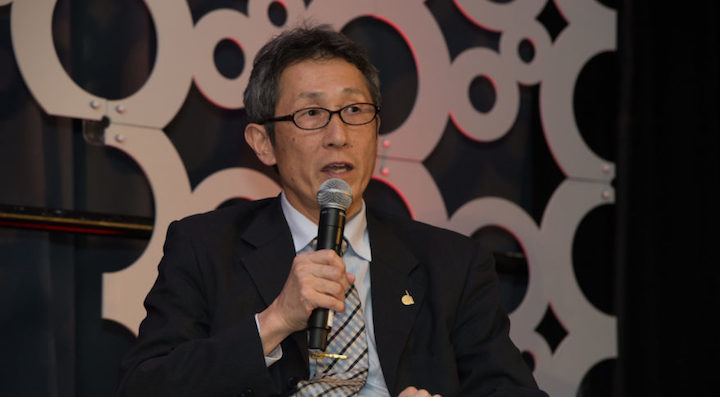24.03.2018

WASHINGTON — Seeking to double the number of launches it can conduct annually, Japan will add a second launch pad to the Tanegashima spaceport to support its next-generation H3 rocket.
Speaking at the Satellite 2018 conference March 12, Ko Ogasawara, Mitsubishi Heavy Industries’ vice president and general manager for space systems, said current launch infrastructure is constraining the company’s ability to launch more than around four missions per year. By comparison, Arianespace, SpaceX and United Launch Alliance, average twice that amount or more annually.
Ogasawara said MHI has only one launch pad for H2A, the rocket it currently builds and launches mainly for domestic government missions. He estimated it takes roughly two months to refurbish the pad between missions, limiting the maximum number of launches Tanegashima can support.
Ogasawara said MHI wants to be able to “launch two vehicles in three weeks” with H3, which starts service in 2020.
“That is a requirement for H3 launch vehicle development, so we will do that with the use of two launch pads,” he said.
The Japan Aerospace Exploration Agency selected MHI in 2014 to build the H3 rocket as a lower cost, more commercially attractive launch vehicle for Japan. H3 replaces the H2A, used for satellite launches, and the H2B, used for resupply missions to the International Space Station.
Ogasawara said 2017 was a banner year for MHI, having completed six launches in 12 months. Measuring over 15 months, MHI completed nine launches, he said.
“H3 will increase launch numbers in a year up to 10. This is our plan … if we have enough orders from the market,” he said.
MHI has had a very limited presence in the commercial market. In 2015, the company performed its first commercial satellite launch, orbiting the Telstar 12 Vantage communications satellite for Canadian fleet operator Telesat on an H2A. Last year British fleet operator Inmarsat secured an H2A launch in 2020 for one of the two Inmarsat-6 satellites Airbus is building.
Ogasawara said MHI is preparing dispensers for small satellite constellations desiring to launch on H3. Those dispensers will be able to release 10 to 20 satellites from a single launch, he said.
H3 is designed to launch with zero, two or four strap-on boosters, allowing it to deliver between two and seven metric tons to geostationary transfer orbit. MHI completed a full-thrust test of H3’s new first stage engine, the LE-9, last month, Ogasawara said.
Without strap-ons, H3 features three LE-9 engines. With side boosters, the rocket uses only two LE-9s. Ogasawara said the version without strap-ons will be the lowest priced, making it more suitable for smallsats.
Quelle: SN

